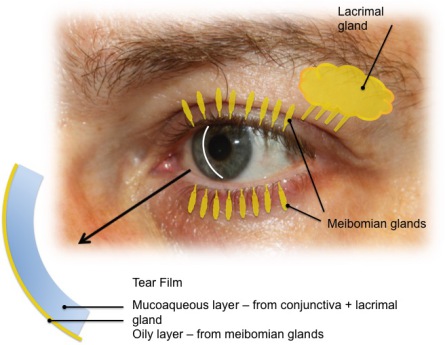Dry eyes
Problems with the quality or quantity of tears can lead to symptoms of dry eyes. This is very common and is often associated with inflammation of the eyelid margins, a condition known as blepharitis.
Do you experience:
- tired eyes
- gritty, scratchy eyes
- burning/stinging
- itchy eyes
- intermittent blurring of vision
If so, you may have dry eyes (or "ocular surface disease") and you could benefit from a consultation.
A variety of treatments are available depending on the exact cause of the problem.
Evaporative dry eye
The meibomian glands lie in the upper and lower eyelids and contribute to the oily layer of the tear film which keeps it stable and stops it from evaporating.
When these glands fail to produce secretions of adequate quantity and quality the tear film can break up rapidly and become patchy. This is the more common cause of blepharitis and dry eye.
Treatment is aimed at improving the quality of tears by keeping the glands from blocking up and preventing secretions from becoming too thick and sticky.
Measures to impove tear quality must be carried out regularly to be effective.
The management of dry eye disease is an ongoing process and although there is no simple cure, most people find their symptoms can be controlled.
When the symptoms are severe extra measures as well as eye drops may be required so your treatment will be customised to meet your individual needs.

